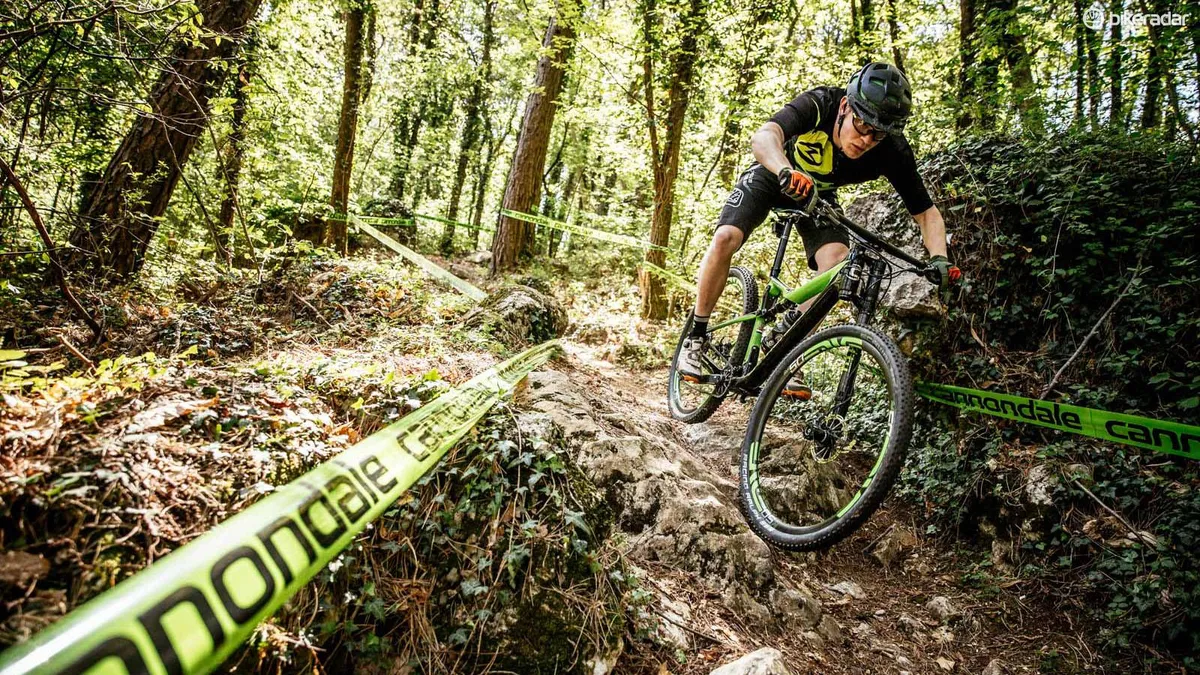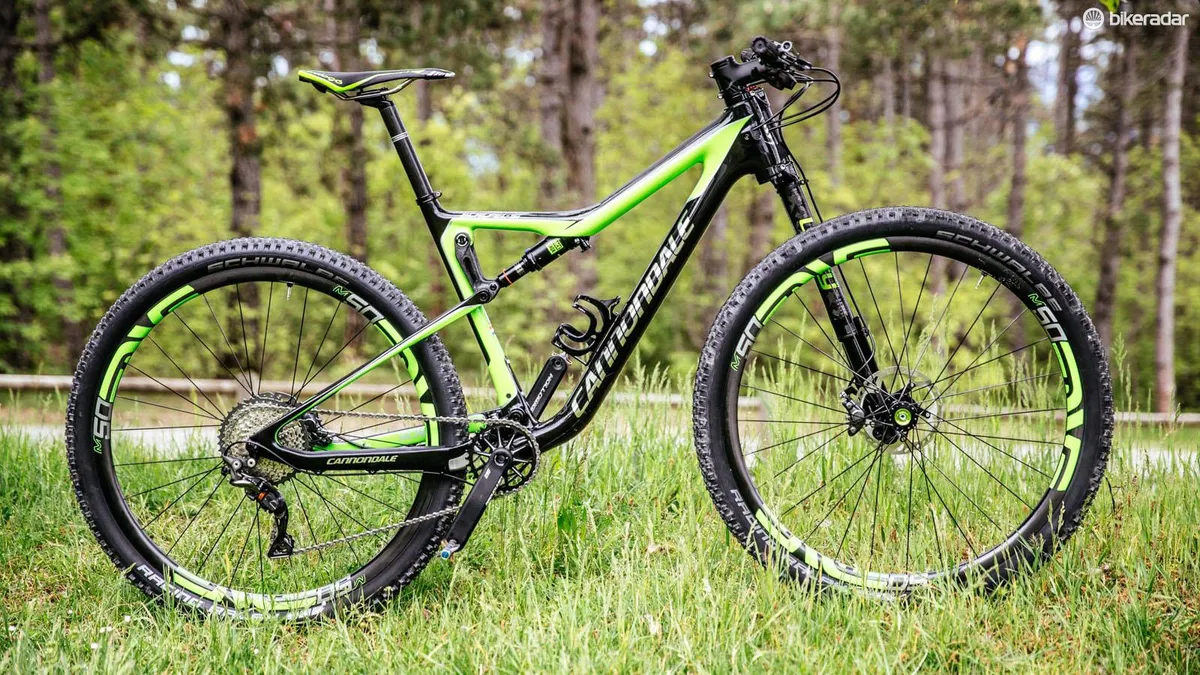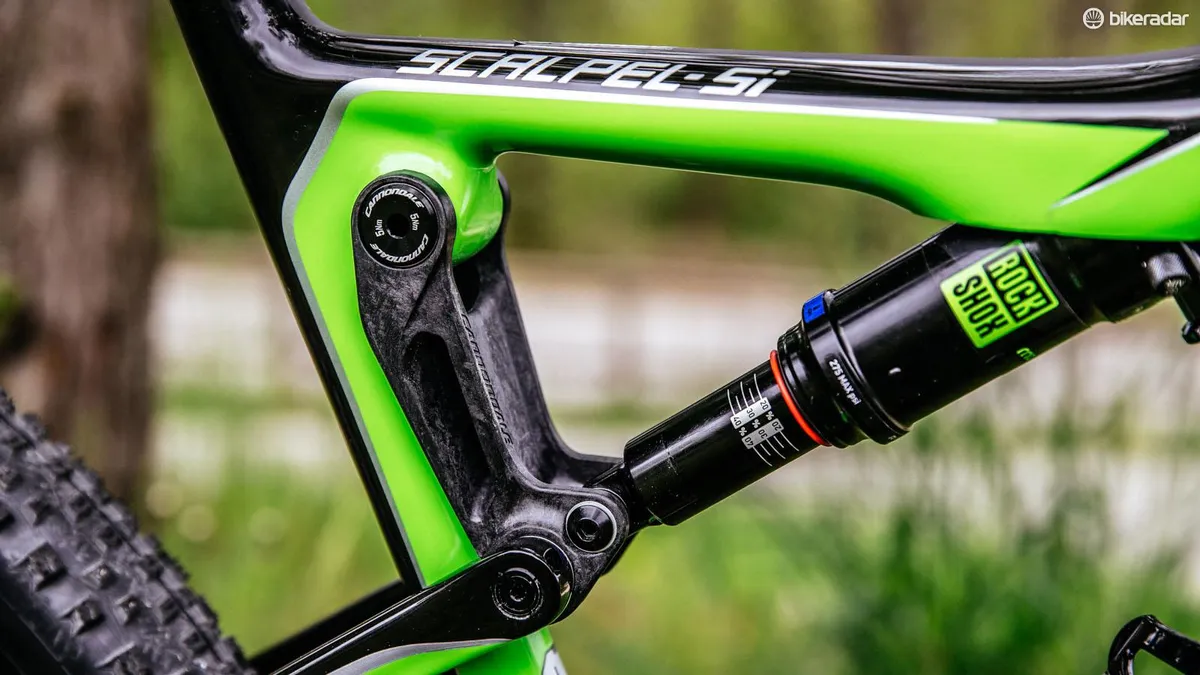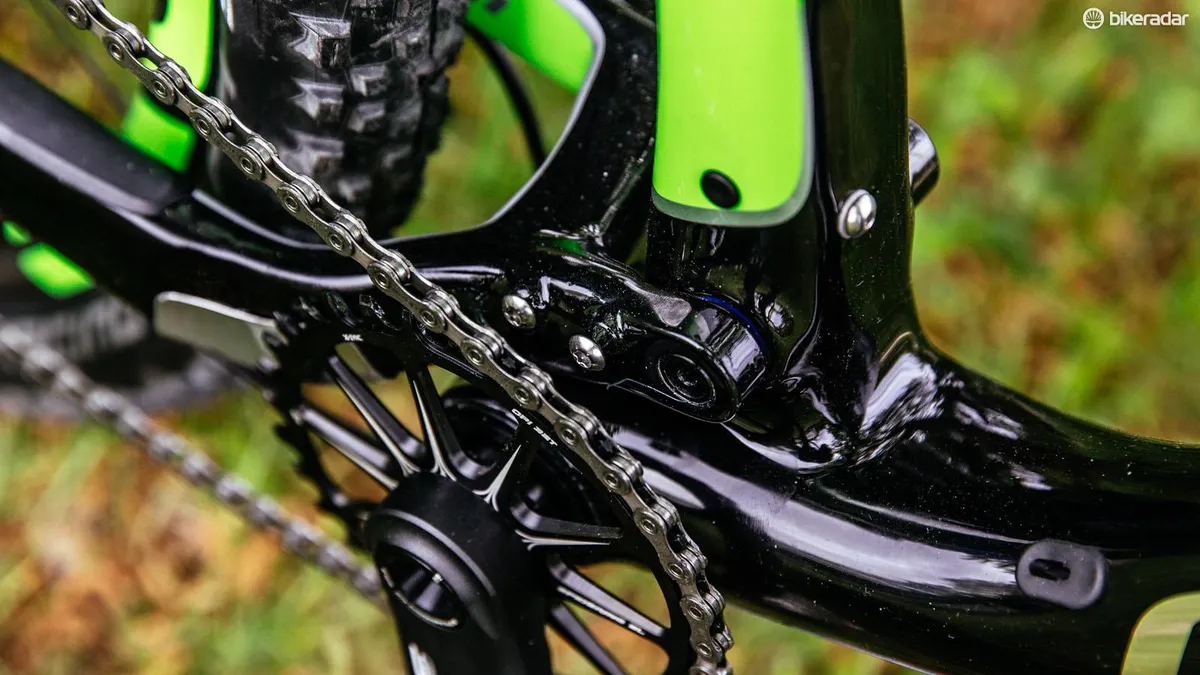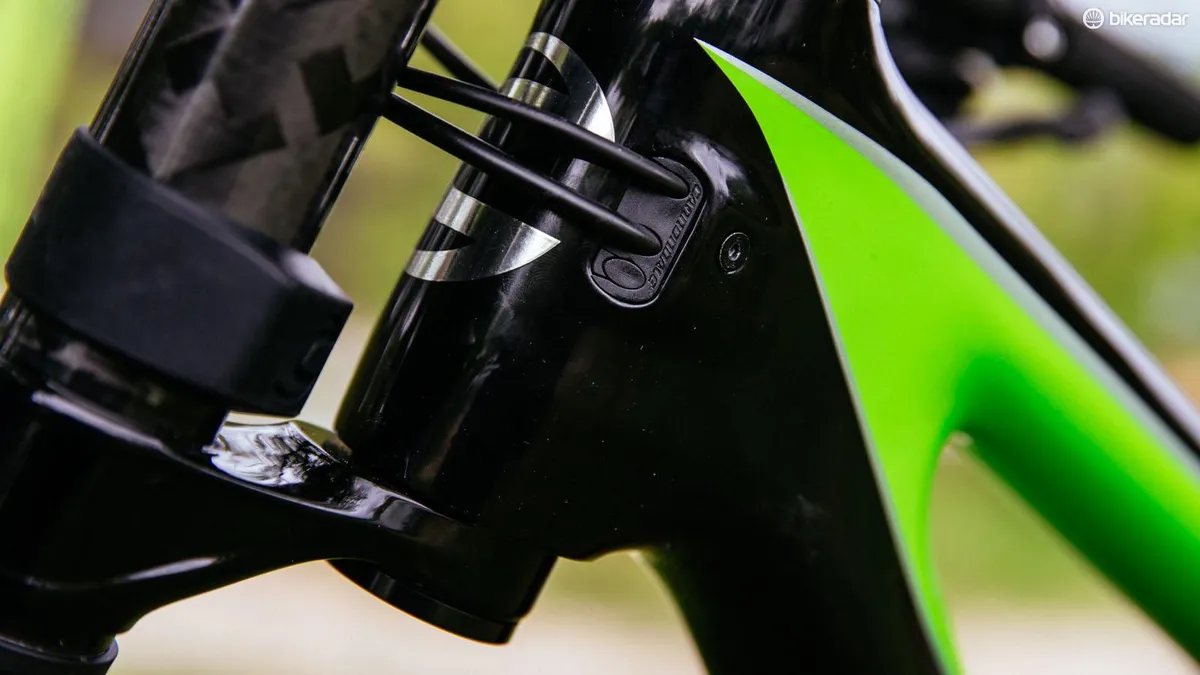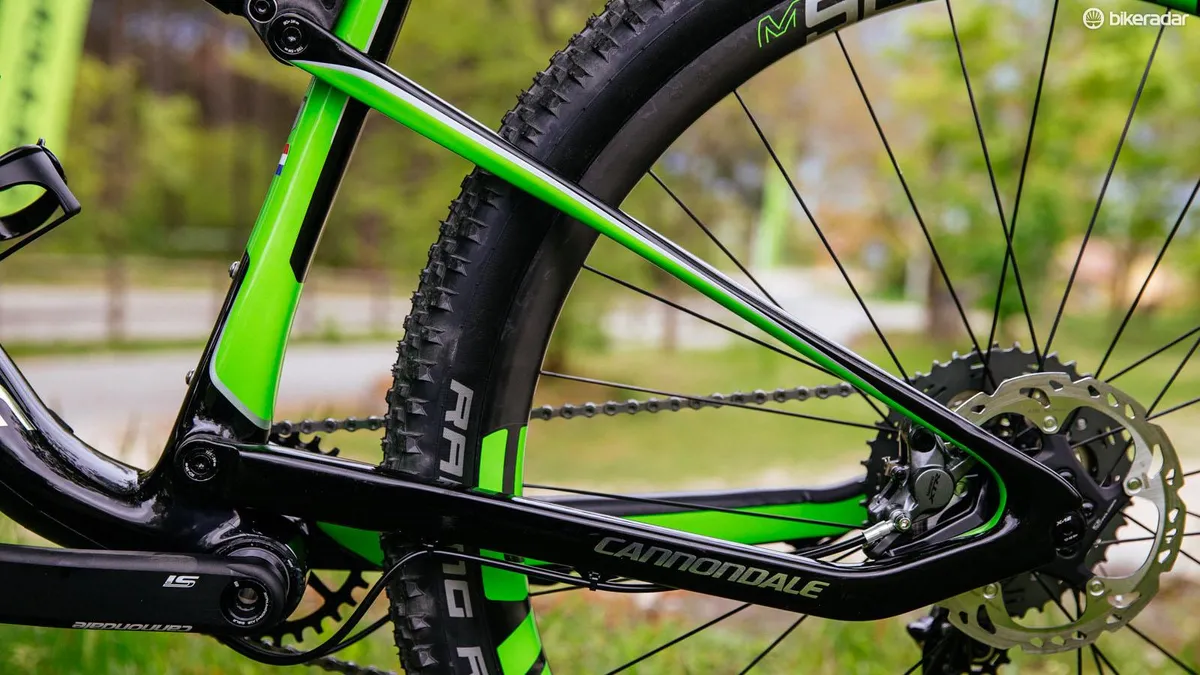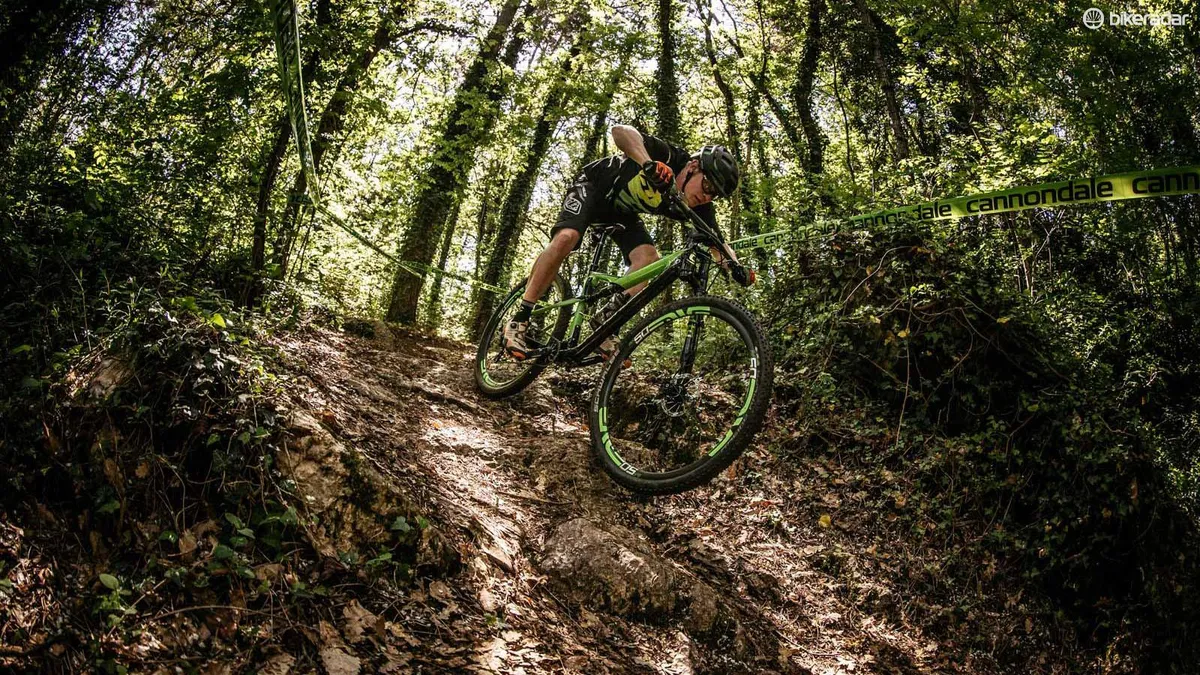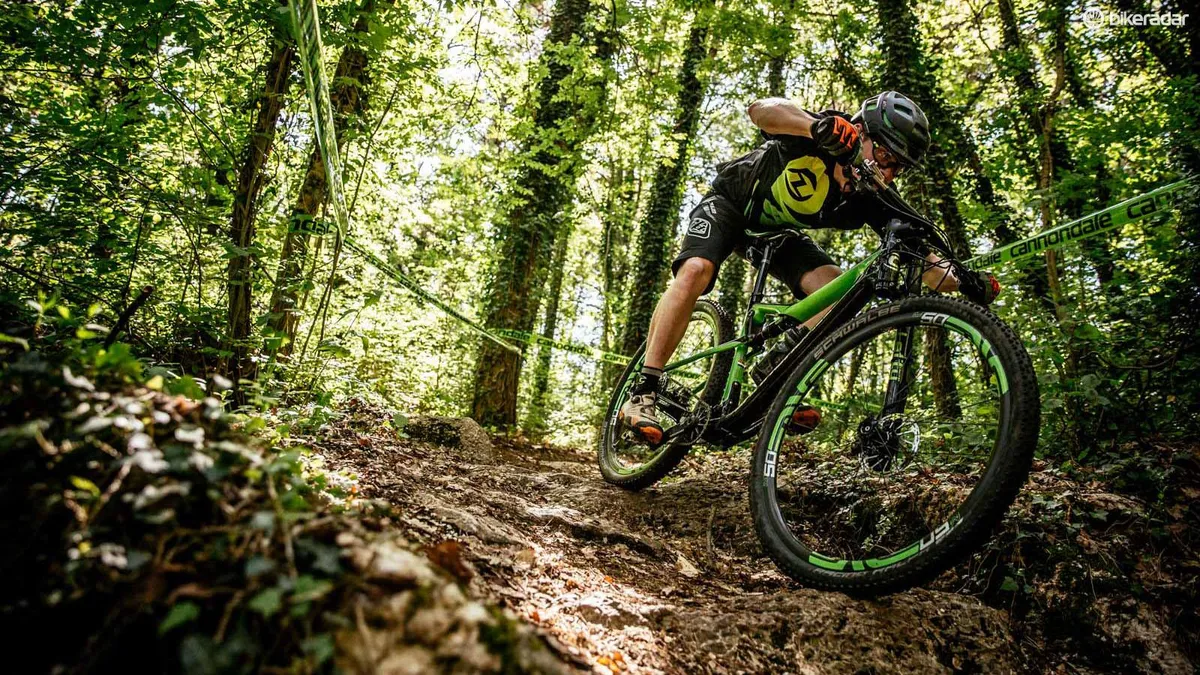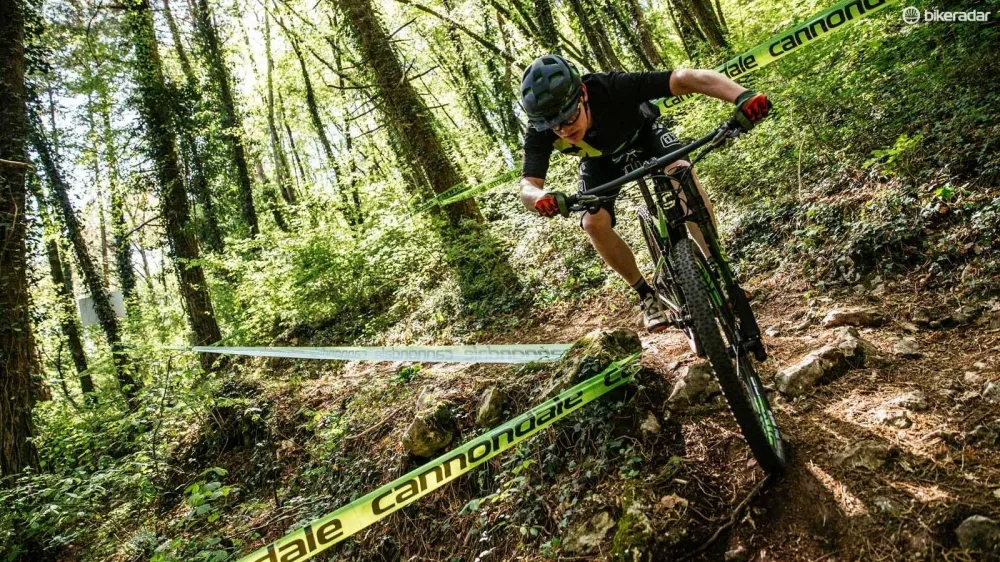Cannondale's Scalpel has been a longstanding sight at international cross-country races over the years, with many of the greats having slung a leg over the sharply named race-focused bike.
These days Fontana and Fumic pilot the Scalpel round the WC circuit, and at Cairns we saw the new version of the bike. Fast-forward a few days and we got to take a spin on one in Riva Del Garda, Italy.
Longer and slacker than the norm
Initially carbon models will be available, and it was the third-tier Race version that we rode. So called ‘BallisTec’ carbon is used on the 100mm travel frame, which helps keep the weight to a very competitive 10.2 kg (med). Cannondale has incorporated some fancy new pivot hardwear, and nifty cable routing to keep lines clean and servicing easy.

The Scalpel-Si's BallisTec carbon frame is a little longer and slacker than XC bikes we're accustomed to
The back end does away with rear pivots; instead the rear triangle flexes to allow the suspension kinematics to work properly. Suspension is taken care of by a RockShox Monarch shock with a short 50mm stroke, which comes with a bar-mounted hydraulic lockout that also locks the 100mm Cannondale Lefty 2.0 fork.
At the back we see a concept first shown on the hardtail F-Si, launched in 2014. Asymmetric Integration (Ai) shifts the drivetrain 6mm to the right, enabling a short 435mm back end, while maintaining fair mud clearance and stiffness. Wheels are re-dished with the rim central between the hub flanges for a stiffer wheel.

The drivetrain is shifted 6mm to the right to facilitate a short back end
Cannondale puts its Out Front geometry to use, which essentially means the Scalpel is a touch longer and slacker than you might be used to seeing on a race-bred XC bike. Okay, it’s still not a trail bike, but the 69.5 degree head angle when paired with the 55mm fork offset and long-ish front end adds up on paper to high-speed stability and low-speed control.
Taut rear end
The first thing you notice about the Scalpel is the taut rear end. The main pivot is located just above the chainring, which gives decent pedalling characteristics when the trail points up. As such, save for a few road climbs, I left the shock open all the time.
This pivot location is paired with what feels like a relatively stiff compression tune on the shock. Again, this benefits pedaling, making it an incredibly effective climber, but I found myself dropping pressure at the rear to try and regain some compliance for descents.
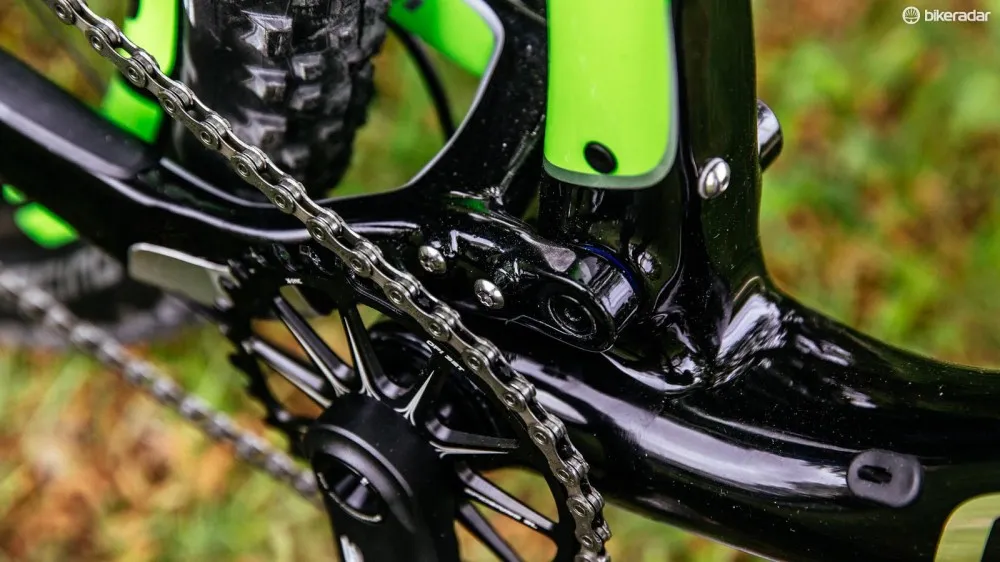
The Scalpel's solid pedalling platform helps it shine on the climbs
If I had more time to play with the bike, I’d probably add a volume spacer to the shock and run yet lower pressures, as I found the rear wheel tended to skip around a lot on rough terrain, working at its best soaking up bigger impacts.
This feeling probably wasn’t helped by the Schwalbe Racing Ralph tyres, which while fast rolling, don’t offer masses of grip – in the UK for instance I’d rather use a softer-compound, less flighty tyre, such as a Maxxis Ardent Race.
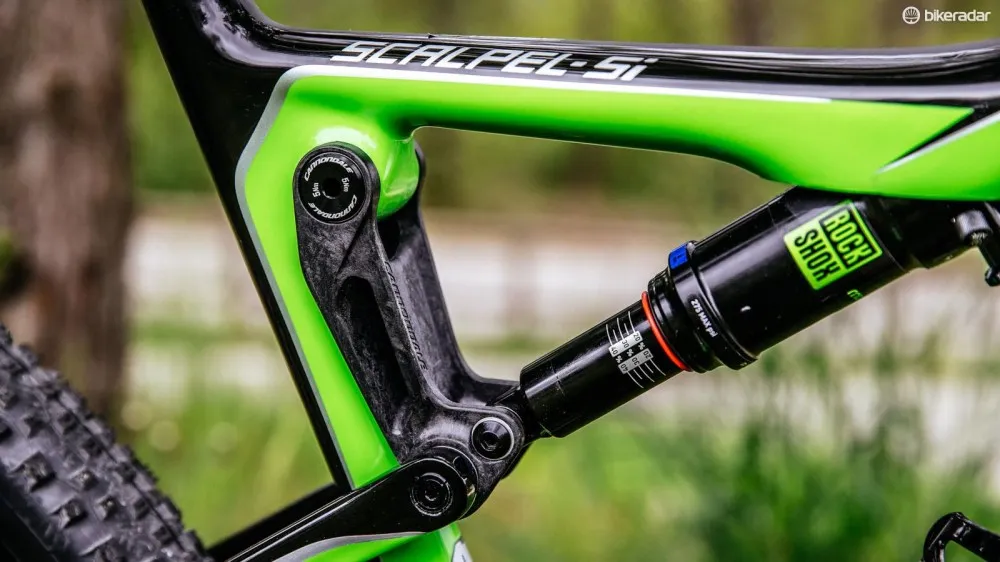
We found the rear suspension may benefit from some fettling to improve its small-bump sensitivity
With that pivot location right above the chainring I didn’t find pedal kickback a problem, and if a 34t chainring (instead of the test ride's 32) were installed it would be even less of an issue (while possibly introducing a touch more pedal bob into the equation).
Room for some fettling
Up at the business end the 100mm Lefty 2.0 fork, once it had had a bit of mid-ride fettling, felt pretty good. It’s stiff and light, and does track well. I had to add a lot of rebound damping to slow the fork down for faster, more technical trails, but there is enough adjustment available to do this.
The feel of the roller bearing assembly is a touch love-hate, but I generally find the Lefty performs better in its shorter travel offerings. Any notion of front end vagueness is quashed by the stiff Enve M50 wheelset, while wider bars – 760mm – and shorter stems compared to the F-Si make for a cockpit that helps wrestle the bike through twists and turns.
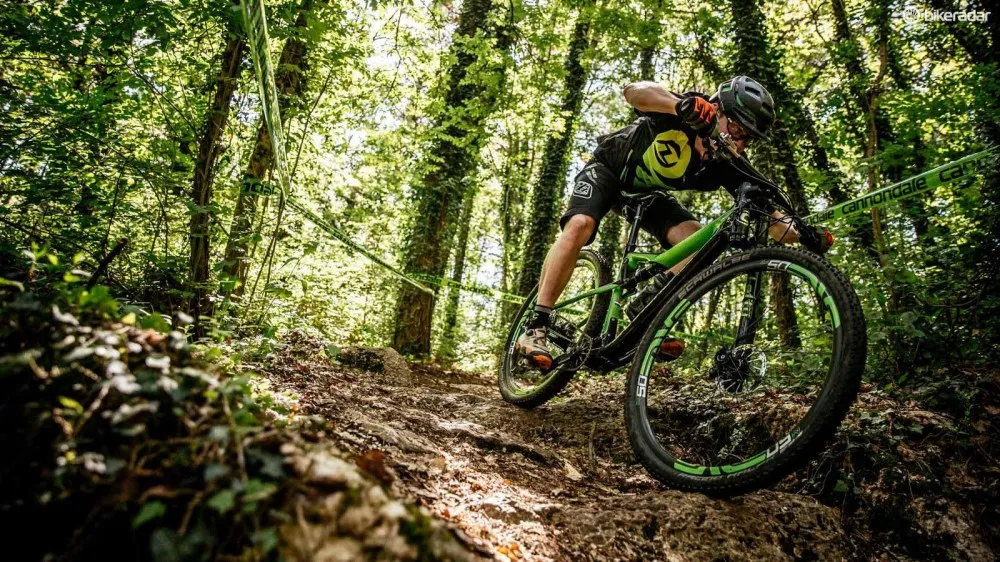
The ENVE wheelset is supremely stiff
That front-end surefootedness certainly goes somewhere towards offsetting the occasionally skittery back end. The long 55mm offset (650b versions have 50mm offset) works well with the longer and slacker geometry to give a ride that is much more confident than you might expect from such a bike.
Certainly, when our ride back to the hotel took a few wrong turns and spat me down some of the area's loosest, steepest rocky descents, I got down largely unscathed, even with the seatpost right up at pedaling height (don’t worry, the Scalpel is stealth-dropper compatible too).
Cannondale says it wants to shake things up with the Scalpel, and looking at what's been achieved you can see where the firm is going. The WC circuit might never take on radical geometry changes, but incrementally Cannondale is approaching figures we’re more used to seeing on trail bikes.
The Scalpel’s shines uphill thanks to its stiff frame and formidable pedalling platform – and thankfully it’s not too much of a handful on the way down either.
